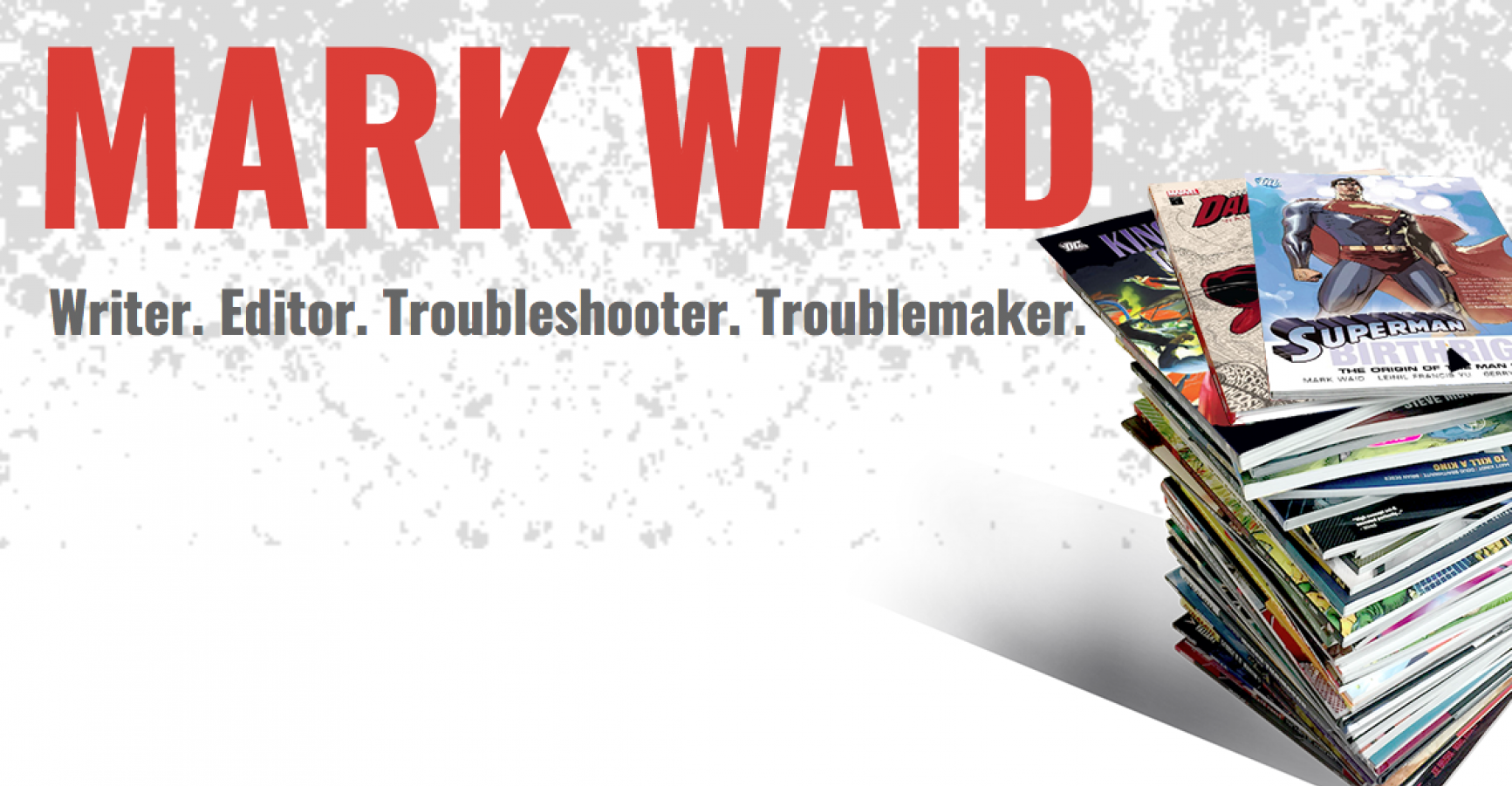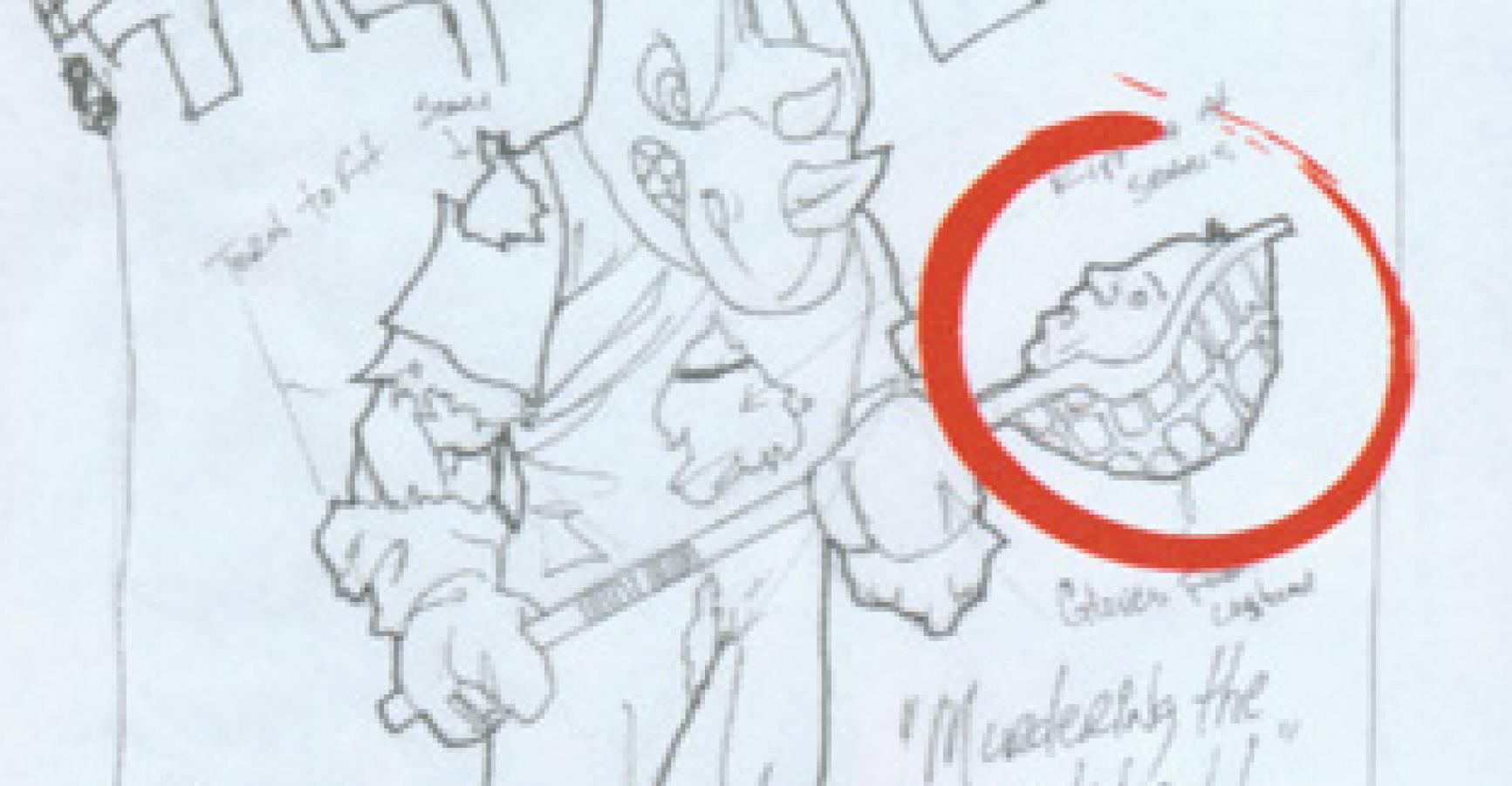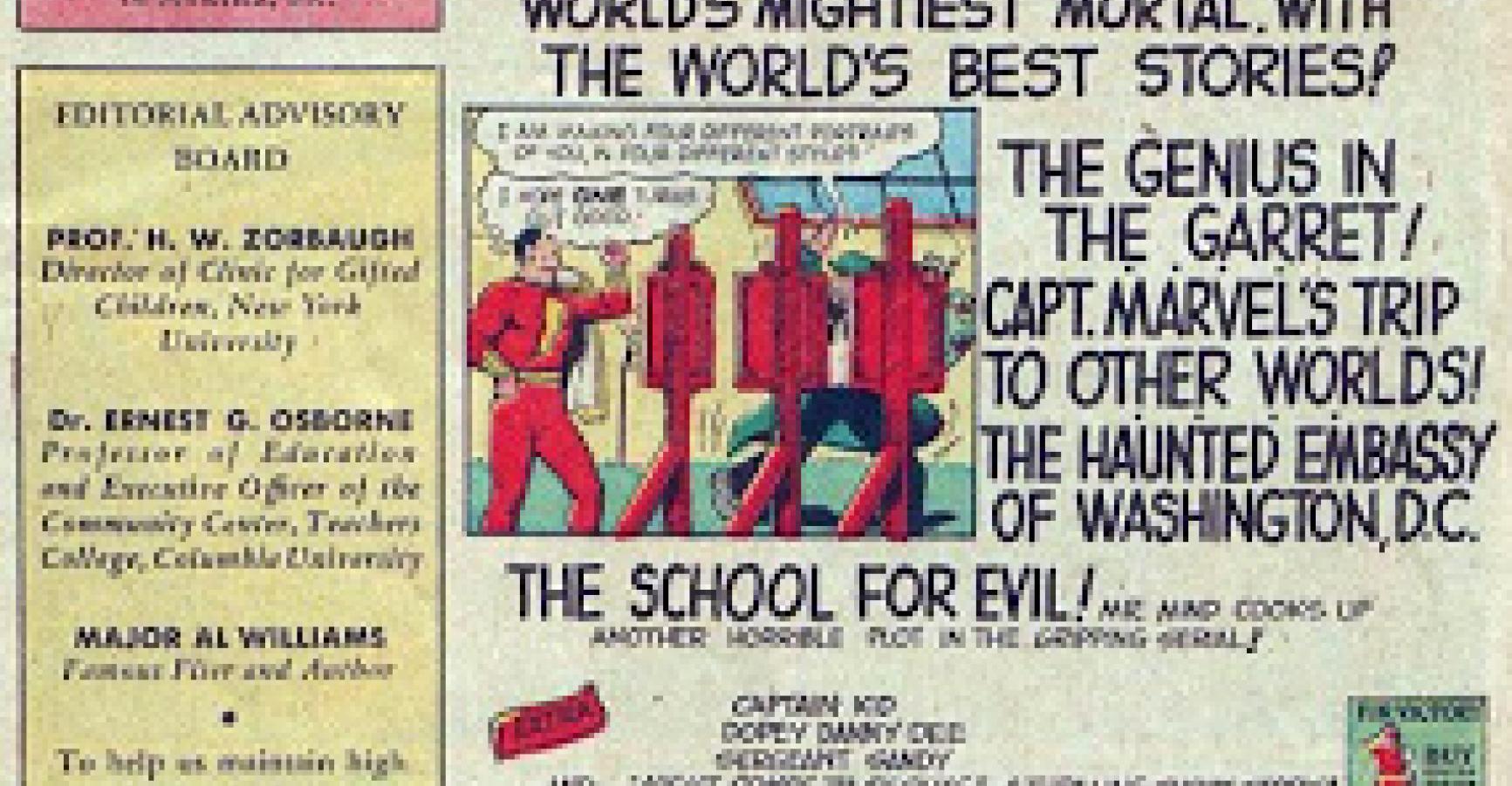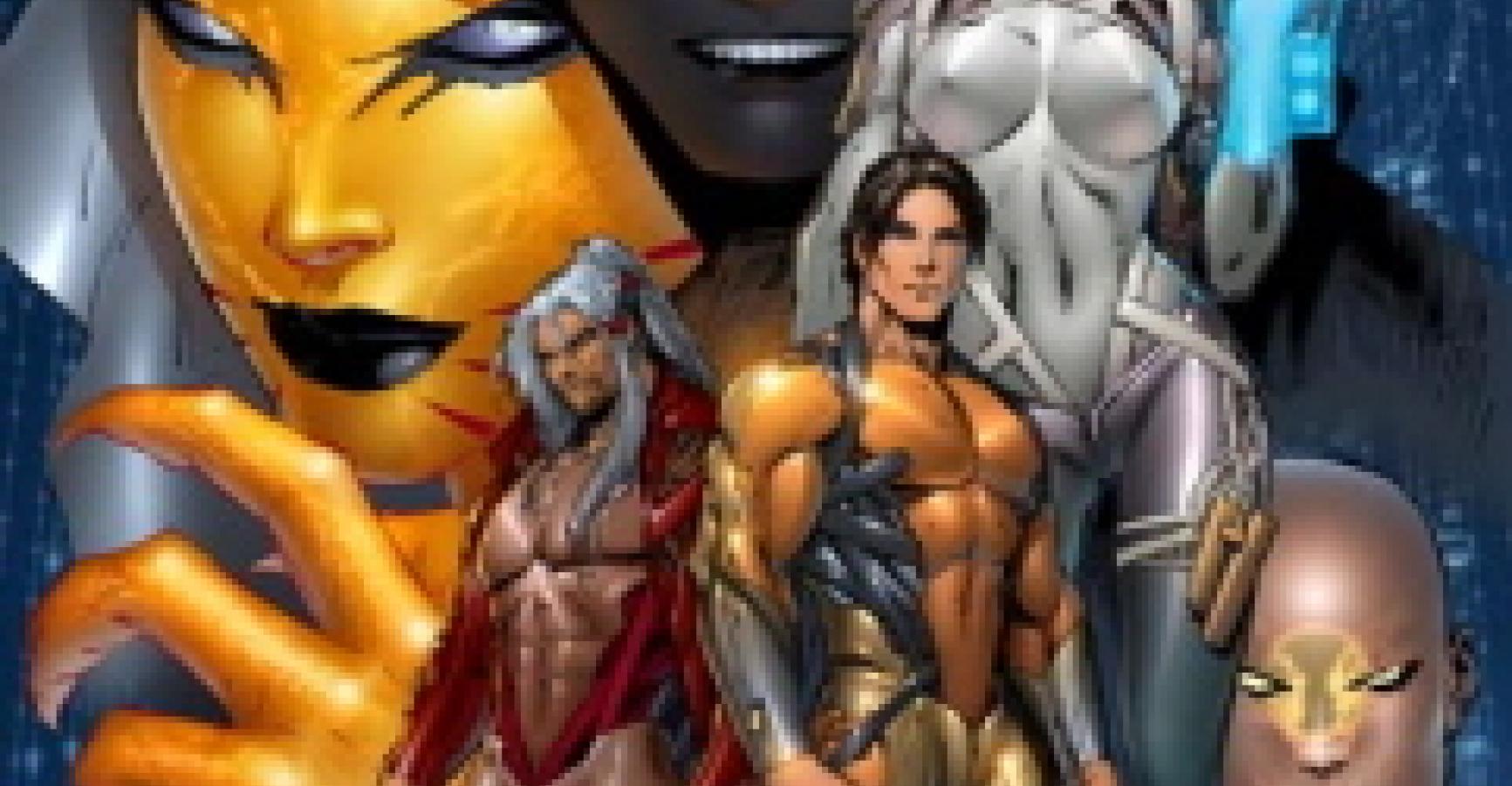The most frequently asked question I get from other writers about moving into digital comics isn’t about how to make any money doing it, though you’d think. (And we’ll be discussing that soon.) It’s “Jeezum Crow, how do you WRITE for that format?” And what’s both daunting and exciting is that we’re having to invent that part of the creative process largely from scratch–but here’s what I’ve learned so far.
At the beginning of my career, when I sat down to write my very first comics script–I believe it was either the Katzenjammer Kids or the Yellow Kid, I forget–yes, that’s a joke–I literally drew it out panel-by-panel in stick-figure form, so inexperienced was I at pacing a comics story. As any editor will tell you, that’s the first hurdle tyro writers have to clear; learning how much copy fits on a page and how to let the art breathe (and do its job to help tell the story). In time, I became comfortable enough at scripting to where I could see the images in my mind’s eye, and I developed a solid sense of how much art and text can go on a page without making either the artist or the letterer want to pick up a hammer. Now, 25 years later, I just go; I type “Page One, Panel One” to start a script and trust my instinct to tell me as I go how to break up the page (subject to improvement by the artist). An example, for those not intimately familiar with the process, from DAREDEVIL #10:
PAGE TWO
PANEL ONE: AS THE MOUTH CLOSES AROUND FALLING DD AND MOLOIDS–
PANEL TWO: –DD BARELY, JUST BARELY, MANAGES TO GRAB HOLD OF ONE OF THE MONSTER’S GIANT, SLICK TEETH–
SFX/small: fap
PANEL THREE/RADAR VISION: –AND PAST DD–HANGING BY ONE HAND, NOW INSIDE THE BEAST–AS HE “LOOKS” DOWN TO SEE THE HELPLESS MOLOIDS VANISHING INTO ITS THROAT.
DD CAPTION: I don’t know what this thing is. I don’t want to know. Doesn’t matter.
DD CAPTION: Despite what we heard as kids, neither JONAH nor PINOCCHIO could really survive inside a GIANT BEAST. Not for TEN SECONDS.
DD CAPTION: It’s not a cartoon CAVE. It’s a CHOKING, WET ABYSS with ACID SPIT–
PANEL FOUR: TIGHT ON DD’S HAND AS HIS FINGERS START TO SLIP OFF THE TOOTH.
DD CAPTION: –and TEETH–
PANEL FIVE: ON THE MONSTER’S HUGE TONGUE AS IT DARTS UP TOWARDS US.
DD CAPTION: –and an APPETITE.
That format works well for me for print. But in digital, every screen is a potential “panel,” and the art needs a little more elbow room, AND the copy needs to be a little bigger than it is in print, AND the artist generally as good an idea (and most of the time, better) of how to break the scenes down to take full advantage of what digital can do visually. In other words, I’d be a egomaniacal moron to not let the artist take the wheel early on in a for-digital collaboration. It’s more work for everyone, more back-and-forth, give-and-take, but that’s why they call it a Learning Process.
For Stuart Immonen, with whom I did Avengers vs. X-Men Infinite #1 with the express purpose of showing off what digital can do, I just let the man go. You can do that with someone as talented and innovative as Stuart. I didn’t produce a typical script or even a typical plot-to-add-dialogue-to-once-it’s-drawn for Stuart; instead, we talked over the story at length on the phone, and then I gave him a scene-by-scene breakdown with some dialogue notes but with no dictates as to how I saw the “page breaks” or “panel breaks.” An excerpt:
We START with a starfield and then blur/blueshift it to indicate insane speed–
–then focus on NOVA rocketing through the galaxy. Captions pop up–internal narration from Nova hurrying himself along–
–as the PHOENIX devours a planet behind him (see reference). Maybe a rack-focus moment here? What looks like an indistinct nebula behind him is revealed to be the coherent shape of the Phoenix Force?
Zoom, zoom, zoom–gotta make it to Earth, gotta tell everyone. Caption noise here about how Nova can’t even remember now how long he’s been running like some sort of intergalactic Paul Revere–five minutes, five weeks? When he hits warp-speed, his brain does funny things to both simultaneously slow down (so he’ll have reflexes to dodge stuff) and speed up (so the minutes won’t go by like years). This effect adds to his stress, he’s addled–
–which is why, as we REDSHIFT back into linear time, he fails by a millisecond to sufficiently BRAKE in time when he hits Earth’s atmosphere–
and so forth. Very light on detail (normally with a plot, I’d at least break it down by pages and panels), but not irresponsibly so; I split the plotting fee with Stuart since he was doing more than his usual share of the lifting, which seemed only fair. (My advice to all comics writers: if you want to take this route and give this level of control over to the artist, be prepared to cut a similar deal; s/he’ll earn it.) Stuart then did thumbnails and used a LOT more screens than I assumed he would (which only made the story look better; no complaints here, I just figured this would pace out at what “feels” like about three standard comics pages, not five or six). From there, he and the editor and I went back and forth a couple of times, suggesting this or that, and then I did a few passes on the dialogue to match the pacing of the story.
That, then, may be my answer for now to the question “How do you write for this format?”: Don’t be dictatorial or controlling. Give the artist his head, even moreso than usual. Collaborate moreso than usual. Talk AT GREAT LENGTH. And let the artist take the lead for now as we all work together to refine the process and learn the new language. Again, it’s more work, and you’ll find you’re doing more of the writing over the phone than at the keyboard, but try it, see if it’s a good fit for you. Those webcartoonists among you who’ve likewise found yourself reinventing this wheel lately–any thoughts, tips or insights are warmly invited. Let’s hear from you. Comment below, or discuss your methods in the forum.



